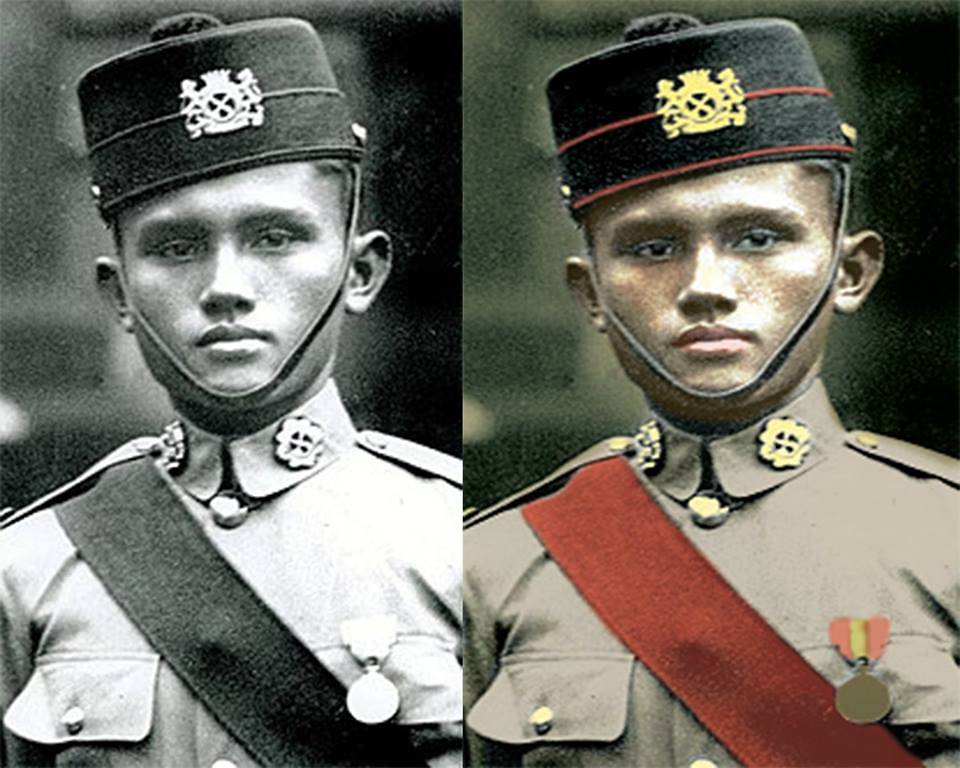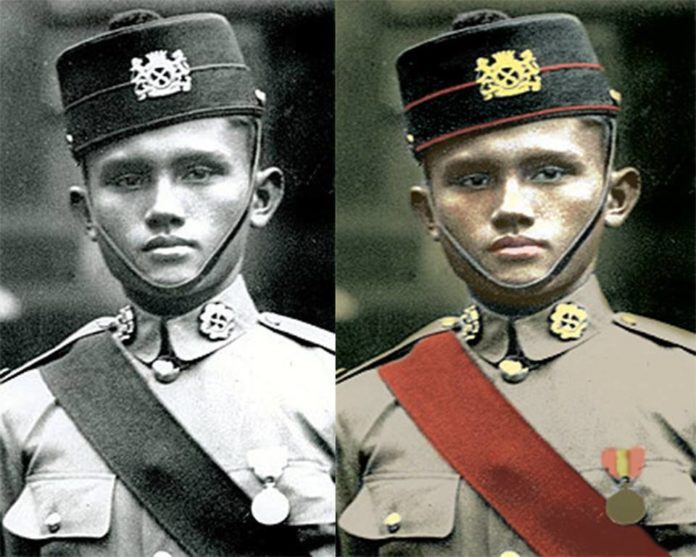SINGAPORE: It all started with New Zealand film director Peter Jackson’s documentary They Shall Not Grow Old.
Ngoh Shian Bang, 24, was awestruck when he saw the film which had colourised footage of World War I scenes.
“It’s all in black and white and when you see old footage, they’re all very sped up. People walking very fast,” said Ngoh.
“In the documentary, it showed the transition from black-and-white footage, sped up footage, slowly to colour. I was like, ‘That’s incredible!’,” he added.
Armed with his computer and Adobe Photoshop, Ngoh decided to give colourisation a go. The first of his attempts were of national hero Lieutenant Adnan Saidi who fought to defend Pasir Panjang Ridge days before Singapore fell to the Japanese.
Ngoh, who picked up the hobby about a month back, said only a handful of photos of Lt Adnan exists today and all are in black-and-white.
“He’s always been in school textbooks … We see black-and-white figures as from ‘that era’ and we don’t feel the connection. Once I coloured them, I realised that they are just like us. We also exist in colour, right? So how are they any different from us? It’s just the time difference,” Ngoh said.

One of Mr Ngoh’s first attempts at colourisation was of Malayan soldier and national hero Lieutenant Adnan Saidi. (Montage: Ngoh Shian Bang)
He posted his “very amateur attempt” on a local discussion board Reddit and received encouraging comments despite botching the colour work on his medal, he said.
Apart from Lt Adnan, Ngoh has also coloured former president Benjamin Sheares, Tan Kay Hai and criminal lawyer Leo Fernando.
Ngoh was fascinated by flight lieutenant Tan’s story. He was a Singaporean who was with the British air force, shot down and captured by the Germans while flying on D-Day in 1944 over Normandy. Lt Tan escaped and lived to old age.
“I think people should know him. He’s a war hero,” Ngoh said.
Ngoh worked on colouring an old photo of Singaporean RAF pilot Tan Kay Hai. (Photo: Fann Sim)
The self-professed history buff said he enjoys history and feels that it is a topic that is “underappreciated” by Singaporeans his age.
“I feel a sense of pride. I’m bringing something that’s from a 100 years ago and throwing it out again. It feels like it could be something from yesterday as compared to taking a picture … This is the closest I’ll ever get to seeing something from the past,” Ngoh, who is also a freelance photographer, said.
Portraits are his main focus now because they are easier, he said. With simple backgrounds, budding colourisation artists like him can focus on the skin and facial tones. These are also the hardest to get right.
“A face has blood on the cheeks, fat over the chin area, nose and ears will also have veins and blood as well. So there could be a red layer first to represent blood, then skin colour could be a bit of yellowish darker tones,” he said.
A portrait can take him five hours to colour.
The easiest things to colour are clothes like uniforms, especially when there is information out there on what they look like, he said. Ngoh, who has been at the hobby for about a month, said there are many guides available online to help others learn the craft.
One of the main Reddit forums for colourised history has grown to more than 430,000 subscribers in six years. Among its moderators are colourists who have turned professional.
ENSURING HISTORICAL ACCURACY
National University of Singapore historian Matthias Wong said while colouring old photos is a “great way” for both colourists and viewers to engage with history, special care should be taken.
“Coloured photos are not historical documents, they are artwork that imaginatively recreate a scene from the past. We do not have records for everything, and we will never know what the past looked like exactly. These creators often invoke their imagination to fill in the blanks, making their best guesses in choosing the right shades of colours,” Wong said.
They should do their best to find evidence to support their choice of colours, he added. This could be done through reading accounts and descriptions of their subjects from that time, and paying close attention to important details like the colours of the hair, eyes and skin.
“We often unknowingly import our own biased views into the past. … Also, placing a watermark on their coloured creations will remind anyone who comes across the photo that this was a recreated image, a result of an imaginative process that may not be entirely representative of the past,” Wong said.
Ngoh, as well as fellow local colourist Cho Dee Fei agreed that they have to work towards an image that is as close as possible to the photo’s reality.
Cho Dee Fei, 29, works as an engineer but dabbles in colouring old photos in his downtime. (Photo: Hanidah Amin)
While coloured old photos evoke a sense of immediacy and relevance to viewers, 29-year-old engineer Cho agreed that they should only be seen as supplements to the actual photos and not meant to replace the original black-and-white photos.
This is a view shared by the amateur colourisation community online too.
“People try their very best to match the colours. For example, uniforms of World War II. You cannot possibly colour them in red, blue or green or whatever colours,” Cho said.
“We follow this for uniforms, buildings, car models. There are some things that are a bit ambiguous. For example, the clothes of civilians. We do not really know what are the colours worn exactly so most of the time it’s a bit of guesswork,” he said.
This, he said, is to respect history and not distort it.
Cho looks for local photos on Roots, a website curated by the National Heritage Board that draws from various repositories including the National Archives and museums.
One of Mr Cho’s colourisation work includes the photo of a woman from the 1960s found from Roots, a website by the National Heritage Board. Skin tone and facial features are the hardest to get right during colourisation, according to Mr Cho. (Montage: Cho Dee Fei)
Cho has also coloured photos of people, whose names are not known to him, donated by the public to the archives. When he started this hobby about half a year ago, Cho realised that most colourised photos originated from Western countries so he wanted to colour people from Singapore’s history – well known or not.
“There are a lot of old photos donated by the public and I find this very interesting,” he said.
“Maybe I feel like many people are doing colourisation of famous people and it becomes a bit too generic. (I) wanted to try something a little different, I suppose,” he added.
Both colourists are looking to work on old family photos in future. But Cho said he wanted to work on getting better at colourisation first.
Ngoh is waiting for his relatives to give him a photo of his maternal grandfather who was born in Thailand whom he never met. Like Peter Jackson, Ngoh is inspired by his grandfather’s life story.
“He was involved in espionage and was in charge of arresting triads in the Golden Triangle. … He fought the Japanese and when they left, he fought the communists,” he said.
Meanwhile, he has worked on requests from friends to colour their old family photos.
“It’s a good way for them to reconnect maybe not physically but emotionally. I think it’s like a service. You feel good that you have done something that makes them happy,” he said.





